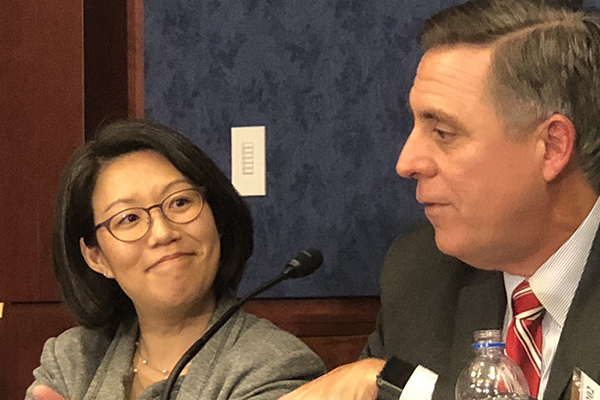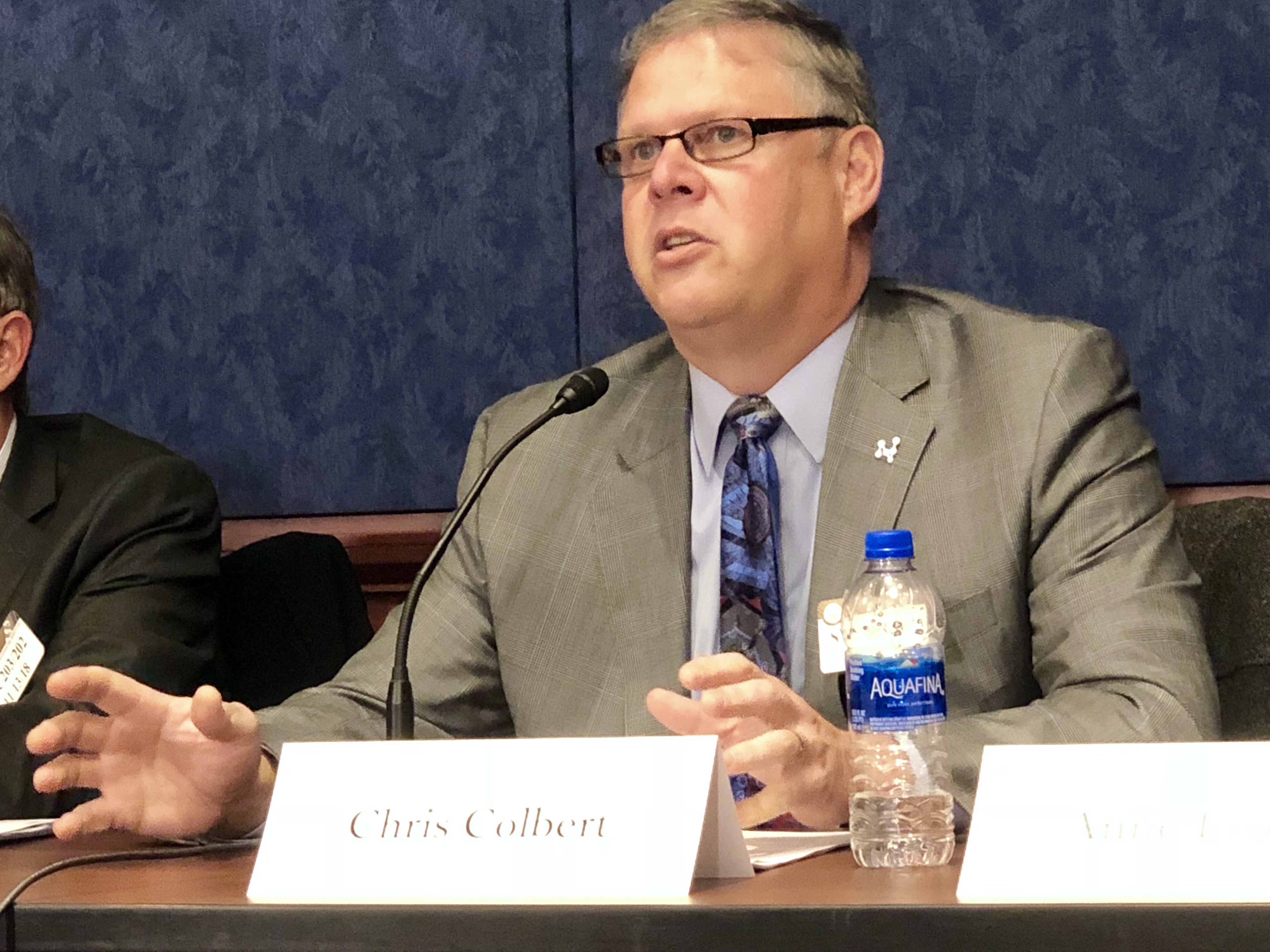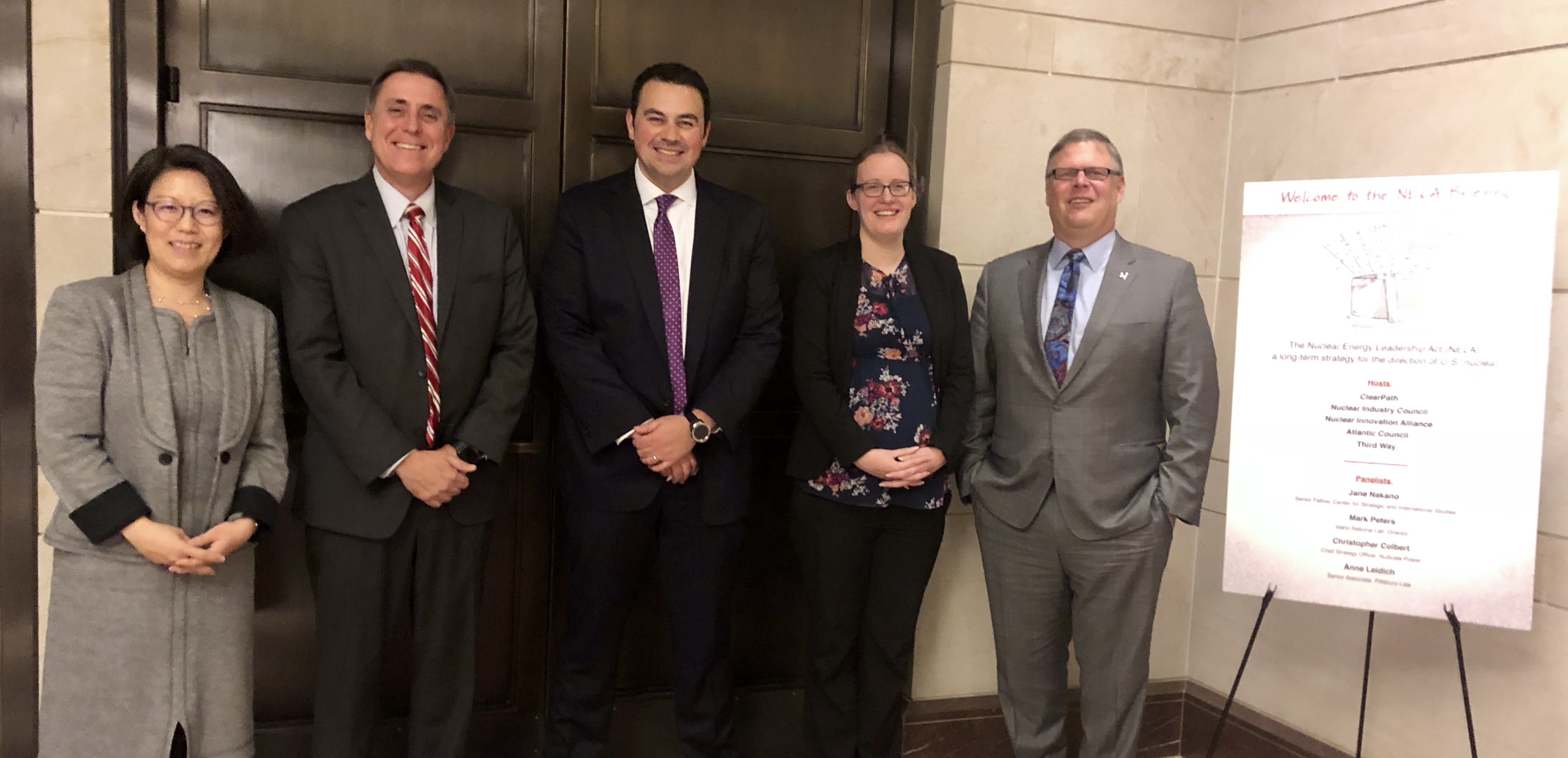
WHERE TO GO NEXT ON ADVANCED NUCLEAR
Idaho National Lab Director Mark Peters broke the news at a Nov. 13 briefing co-hosted by ClearPath and others that GE Hitachi’s General Electric’s PRISM technology has been selected to support the lab and the broader Department of Energy’s Versatile Test Reactor program. This is a major step towards developing adequate U.S. supply of advanced nuclear fuels and materials.

Peters, speaking at a briefing focused on Senate Energy and Natural Resources Chairman Lisa Murkowski’s bipartisan Nuclear Energy Leadership Act, said “there’s a lot to like in NELA about what we need to further nuclear energy.” That includes “moonshot” goals to prioritize action at the Department of Energy and its national labs. “I think we can be much more rigorous about tying concrete goals to our R&D plans,” Peters said.
Pillsbury Law Senior Associate Anne Leidich said NELA is a “great first step” in developing adequate domestic supply of the high-assay low-enriched uranium that will be needed to fuel virtually any advanced reactor being designed. But she said more is still needed on the regulatory front. “There really is no existing capability to produce this fuel,” she said.

The Nov. 13 briefing – co-hosted by the U.S. Nuclear Industry Council, Nuclear Innovation Alliance, Third Way and the Atlantic Council – dissected how NELA would be a comprehensive blueprint for advanced nuclear.
NuScale Power Chief Strategy Officer Chris Colbert outlined how the bill’s initiation of a long-term nuclear power purchase agreement pilot between DOE and utilities could help companies who would follow NuScale’s pioneering work on a U.S. small modular light-water reactor. “We kind of look at ourselves as a trailblazer as being the oldest new advanced reactor company,” Colbert said. “A number of the things are going to help those folks coming after us.”
NuScale, which has a goal to have its first SMR plant operational at INL in 2026, sees power purchase agreements changes in NELA as a “key derisking element” for others who want to follow in the company’s footsteps, Colbert said.

Peters – whose lab is housing testing of NuScale’s SMR – added that next-generation reactors could be scalable enough to be deployed in remote areas. “Let’s take it to Alaska,” he said. “I’m a big fan of small and very small.”
Jane Nakano, a senior fellow at the Center for Strategic and International Studies energy and national security program, noted that the “U.S. is already starting to fall behind” in the advanced nuclear race particularly to Russia and China, where “nuclear is their national focus, both for R&D but also for export.”

Hope springs eternal for action. ClearPath Executive Director Rich Powell pointed out that NELA is a great example of potential bipartisan clean energy legislation in the new divided Congress. Cosponsors on Murkowski’s bill are Democrats Cory Booker, Dick Durbin, Joe Manchin, Sheldon Whitehouse, Chris Coons and Tammy Duckworth and Republicans Mike Crapo, Jim Risch and Shelley Moore Capito.
“That’s quite a diverse set of folks, and I should note they are all returning next congress,” Rich said. “It further shows that not only can nuclear and clean energy policy more broadly be bipartisan, it can be supported for many different reasons, whether it’s to address carbon emissions, our national and energy security, or just to ensure that America remains at the forefront of next generation zero- or low-carbon power sources that will dominate the global export market in the coming decades.”

|